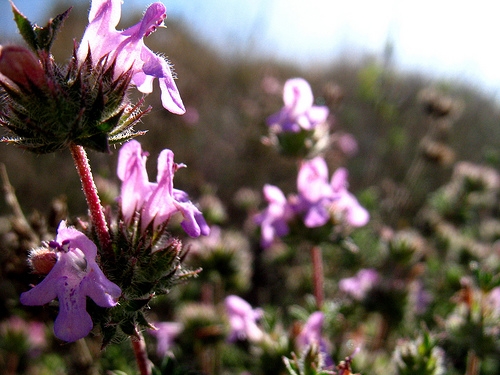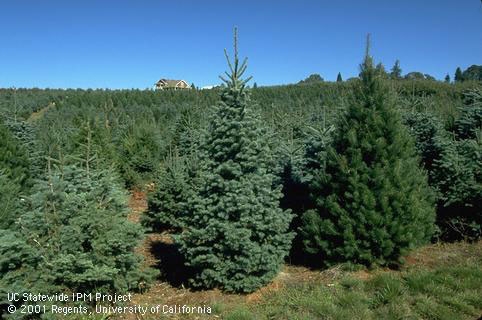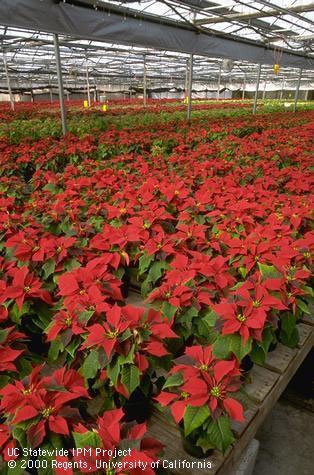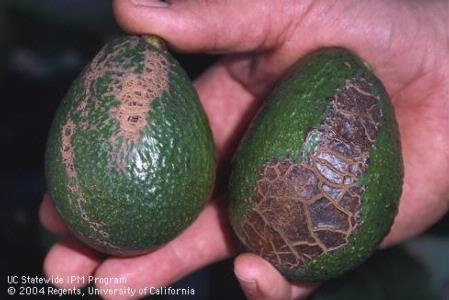UC Blogs
Savor the Za'atar
What is this mysterious ingredient that Michael Symon and other Iron Chefs are talking about when they refer to Za'atar. I am usually watching the foodie shows in the evening and the question soon fades away only to resurface another evening when a Mediterranean dish is being prepared. By happenstance I recently attended a plant sale and spied an herb marked "Za'atar". Ok, finally I am to find out what the fuss is about with this herb. The plant is labelled Satureja thymbra aka 'Pink Savory Za'atar' of the Laminaceae (mint family) a perennial that grows to 12 " likes sun, is a mid-Eastern spice with the delicious flavor of oregano, thyme and mint and the plant prefers hot dry areas. Great, I have just the garden space in my new perennial garden. Almost alright, I next go to Google to corroborate this new information. I find confusion with my results, is Za'atar an herb as mine was labelled, or is it a spice mixture similar to a curry mixture?
I find that Za'atar has references both as a spice mixture and an herb. The herb Origanium syriacum appears to be the true za'atar with hyssop, Satureja thymbra, the genus of tender, thyme-like plants (Thymbra spicata, t. capitatus) also referred to as Za'atar. The common denominator with these plants is the aroma of oregano from the chemical carvacrol.. The Za'atar spice blends include oregano or thyme or both. So, as is frequently the case, with too much information I have to make a choice. I am going to stay with my local source and I will grown the herb, Satureja thymbra in my garden and call it Za'atar. This evergreen perennial is native to the Mediterranean and is a dominant plant on the island of Crete. It flowers in the spring with large pink flowers and the bush is highly aromatic and imparts a spicy flavor. Here in zone 9b we are very lucky to share the Mediterranean climate that allows many plants to thrive as perennials with the lovely benefit of year round herb gardens. Maybe, I'll send off a question to Alton Brown on this subject and let him tackle this subject and see how he does.
Residents feel left out of Delta planning
Residents around the Sacramento-San Joaquin River Delta feel left out of the decision-making process over a local water conservation plan, University of California researchers learned by conducting "conversations" in five counties last year. Tim Hearden of Capital Press spoke to two of the UC Cooperative Extension advisors involved in hosting and evaluating the conversations, Jodi Cassell and Shelly Murdock of Contra Costa County.
Residents repeatedly said experts and policymakers gave their points of view at public meetings about a water conservation plan that could include a peripheral canal, but they didn't seem to absorb the public's perspective.
"I'm a scientist and I work on ecological things ... but you really have to work with the communities to get their buy-in to the lands you want to restore," Cassell said. "When you go to a public meeting and there are maps on the table or documents showing your property ... it gets people's dander up."
University researchers produced a 4-page report and a 13-minute video containing some of the comments made at the meetings, and plan to share the views with policymakers.

ConversationReport
In Pursuit of Rare Bumble Bees
It's good to see University of California scientists pursuing rare bumble bees. The latest news on the bumble bee front: UC Riverside scientists...
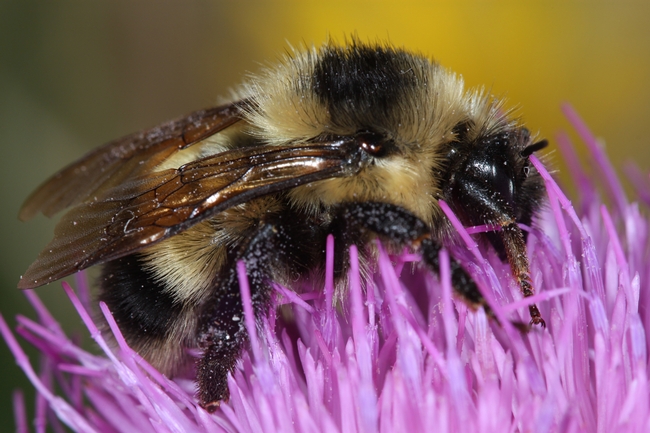
Cockerell’s bumble bee. (Photo by Greg Ballmer, UC Riverside)
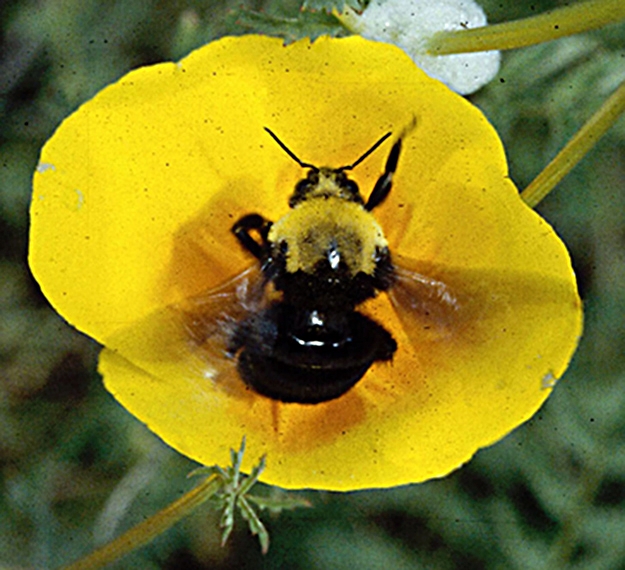
The criticallly imperiled Franklin's bumble bee. (Photo by Robbin Thorp, UC Davis)
Caring for Your Holiday Trees and Plants
The holidays are here again! For many families, this means that their indoor space will be full of color (filled with a holiday tree and seasonal plants). Selecting and caring for trees and plants are an important part of the holiday preparations. With a little attention to selection and proper care, the holidays can be full of wonderful fragrances and freshness, making the season more enjoyable. With holiday trees, safety is also an important consideration.
How to select and care for a tree: In selecting just the right tree for decorating, most people look for a tree that is healthy and free from damage. They generally want a tree that tapers gently to a full bottom with ample number of branches for ornaments. Quality trees will be fresh, with pliable needles that are firmly attached to the branches; clean (free of moss, lichen, vines and other foreign matter) and healthy with good color; and well-trimmed.
To pick out the "perfect" pre-cut tree, decide on the tree that is the right height for your home and possesses resilient, attached needles and strong limbs. The most common species of fresh cut trees are the Douglas, balsam and noble firs as well as the Monterey pine. Old trees can be identified by bouncing the cut portion of the tree trunk on the ground. If many needles fall off, the the tree is dry and a fire hazard.
Observing fire safety precautions is very important, as a tree can rapidly fill a room with fire and deadly gases. Once the tree is standing indoors, keep the tree filled with water at all times. Do not place the tree close to a heat source, which will dry out the tree. Also, be careful not to drop or flick cigarette ashes near the tree.
How to care for poinsettias: When potted plants are brought into the house, where the light and relative humidity are low and the temperatures are at human comfort level, they do not perform well for long periods. Poinsettias require bright light and should be kept away from drafts. A temperature between 65 and 70 degrees Fahrenheit is ideal. Keep them well-watered, but do not overwater.
After the bracts fade or fall, set poinsettia plants outdoors where they will receive indirect light and temperatures of 55 to 85 degrees Fahrenheit. Water sparingly during this time, with just enough water to keep the stems from shriveling. Cut the plants back to about within 5 inches from the ground and re-pot in fresh soil. As soon as new growth begins, place in a well-lighted window.
After the danger of frost is over, place pots outdoors in a partially shaded spot. Pinch the new growth back to get a plant with several stems.
After Labor Day, or when the nights start to cool, bring the plants indoors. Continue to grow them in a sunny room with a night temperature of about 65 degrees Fahrenheit.
How to care for mums (chrysanthemums): A potted, blooming mum can provide a nice color accent in a home. If given proper care, the plant should have a life of four to six weeks indoors. Provide mums with several hours of bright, indirect sunlight near a window each day. This will maintain growth without fading blooms prematurely.
Water when the soil becomes dry to the touch and the pot becomes noticeably lighter in weight. If temperatures are warm, water may be needed daily. Do not let the potting mix become completely dry, and be sure the plant does not stand in water. Fertilizer is not needed. Remove dead leaves and faded blooms as they develop to keep plants looking their best. The plants will not re-flower in the home.
After flowering, they can be planted in the garden where they often flower again in the fall and sometimes in late spring. After planting in the garden, trim plants once or twice to keep them from getting leggy and re-trim them after each flowering cycle.
For more information on Cooperative Extension's offerings in environmental horticulture and gardening, please click here.
Southern California wind storm damages crops
If guacamole seems extra expensive come Super Bowl Sunday, it's because of the dry windy weather during the past several days, reported Craig Fiegener of NBC News in Los Angeles. Fiegener reported from UC Riverside and spoke to UC Cooperative Extension subtropical horticulture specialist Peggy Mauk.
Wind is no friend to the avocado industry. Prolonged and dry wind will damage trees and fruit. Citrus trees face the same threat, Mauk said.
"The plant starts making choices where the water needs to go, and the fruit, they're already getting close to maturity, they'll go ahead and drop," according to Mauk.


